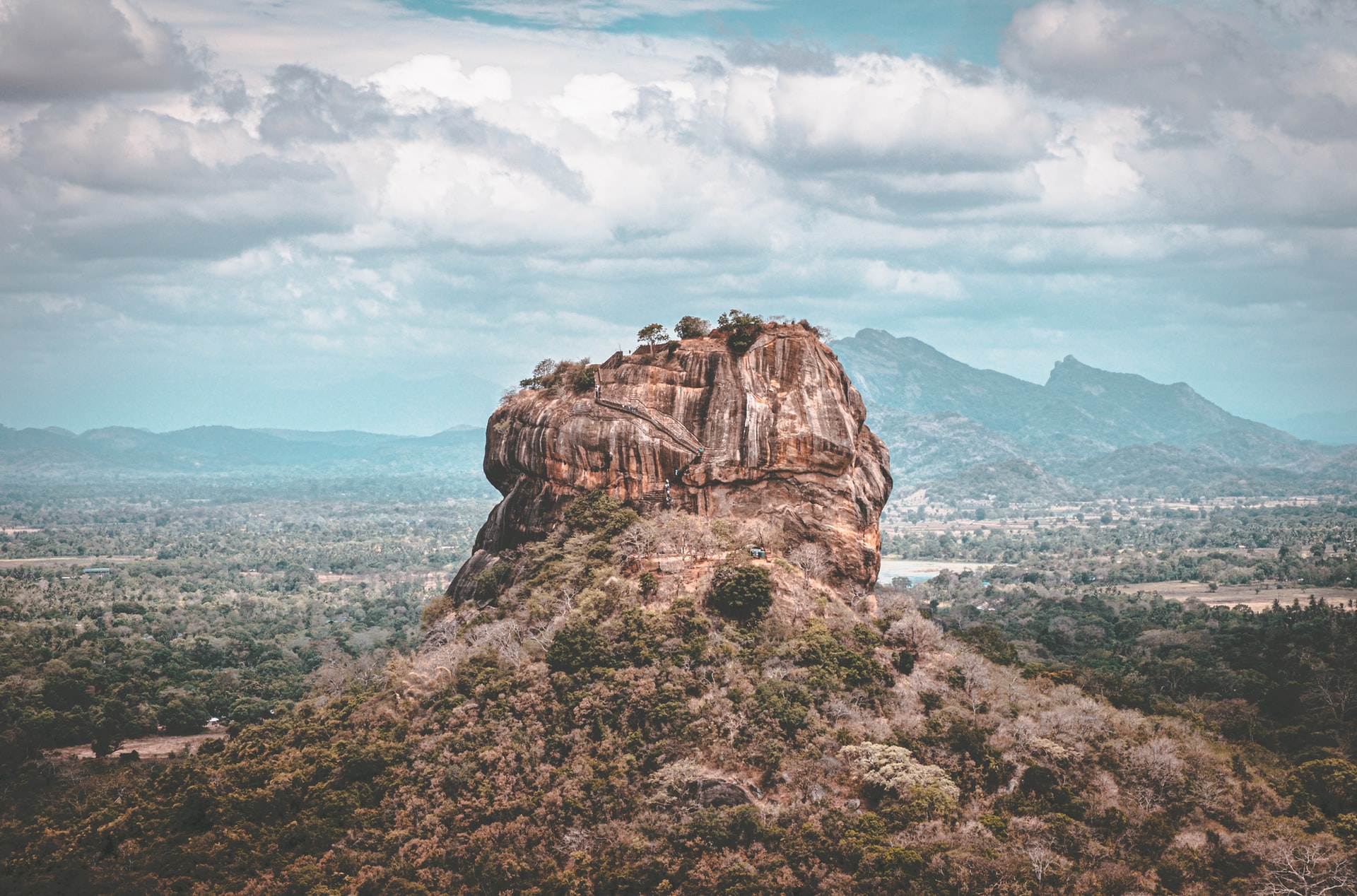The Rock Citadel
The most significant feature of the Rock would have been the Lion staircase leading to the palace garden on the summit. Based on the ideas described in some of the graffiti, this Lion staircase could be visualised as a gigantic figure towering majestically against the granite cliff, facing north, bright coloured, and awe-inspiring.
Through the open mouth of the Lion had led the covered staircase built of bricks and timber and a tiled roof. All that remains now are the two colossal paws and a mass of brick masonry that surround the ancient limestone steps and the cuts and groves on the rock face give an idea of the size and shape of the lion figure.

Though traces of plaster and pigments occur all over this area, only two pockets of paintings survive. These are in a depression of the rock face, about a 100 meters above the ground level. These paintings represent the earliest surviving examples of a Sri Lanka school of classical realism, already fully evolved by the 5th century, when these paintings had been made. Earlier the Sigiri style had been considered as belonging to the Central Indian school of Ajanta, but later considered as specifically different from the Ajanta paintings. The ladies depicted in the paintings have been variously identified as Apsaras (heavenly maidens), as ladies of Kasyapas court and as Lightening Princess and Cloud Damsels.
There are also remains of paintings in some of the caves at the foot of the rock. Of special significance is the painting on the roof of the Cobra Hood Cave. The cave with its unique shape dates from the pre-christian era. The painting combines geometrical shapes and motifs with a free and complex rendering of characteristic volute or whorl motifs. It is nothing less than a masterpiece of expressionist painting.